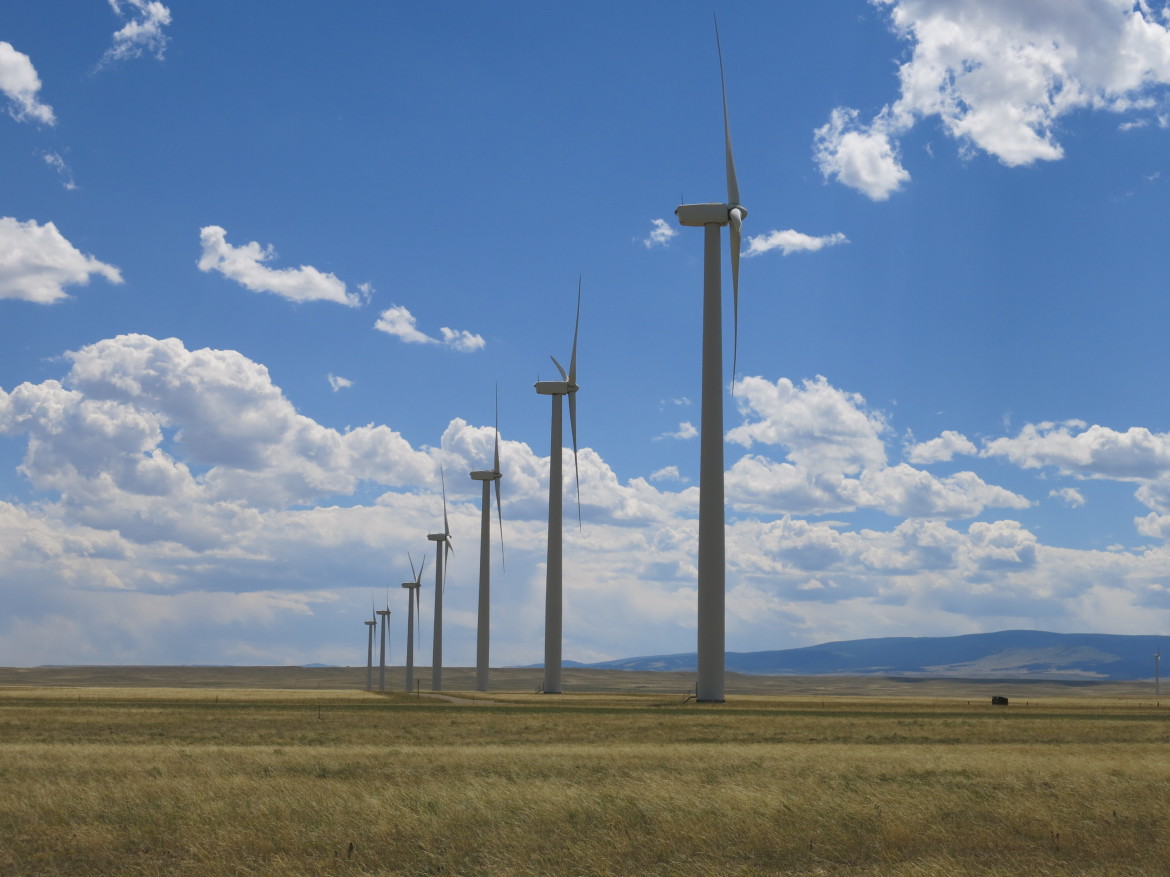
Leigh Paterson/Inside Energy
High Plains Wind Farm near McFadden, Wyoming. It is a small project, with just 66 turbines.
A series of caverns, carved deep into underground salt formations in Utah, could one day hold 60,000 megawatt-hours of wind-generated electricity. These subterranean holes are a key part of a new proposal for a massive wind project in Wyoming. The companies behind it believe this storage facility could change everything.
Anne Spaltholz of Duke-American Transmission Co., one of the partners in the plan, said storage could solve one of the key problems with electricity generated by wind.
“The wind blows and blows and blows but not necessarily when we need the energy, Spaltholz said. “But with this facility, it can be stored and then released when LA needs the power, like on a hot summer day.”
On Tuesday, four companies, including Duke-American Transmission Co., announced their $8 billion dollar green energy initiative called the Pathfinder/Zephyr Wind Project, to eventually send Wyoming wind power to California. According to the press release, “the project would require construction of one of America’s largest wind farms.”
Wait a second. This all sounds awfully familiar. In fact, it sounds EXACTLY like another gigantic Wyoming wind project that Inside Energy reported on last month. According to the Power Company of Wyoming’s website, the Chokecherry and Sierra Madre Wind Energy Project, “will be the biggest in the country with 1,000 turbines that could generate up to 3,000 megawatts of energy.” If the plan is approved, the electricity generated by this project would be transported to the southwest via TransWest Express, a 725 mile transmission line.
So, wouldn’t these two projects be, at best, redundant, and, in the end, in competition with each other for the same clients – West Coast consumers?
John Reid of Wyoming-based Pathfinder Renewable Wind Energy says there are more than enough customers to go around:
“The market has sufficient demand for more than one project out of Wyoming.” Reid said. “Our projects are quite different in terms of timelines.”
California, one of the largest power grids in the country, simply needs massive amounts of electricity and likely will continue to in coming decades.
Alhough the salty underground storage facility sets Pathfinder apart, the project has a long way to go before it is realized. According to today’s press release, best case scenario has the project going online by 2023.
Storage itself is not particularly efficient. “You’re going from electricity to storage and back to electricity,” said Jonathan Naughton, Professor of Mechanical Engineering at University of Wyoming. “And any time you do those kinds of things there are losses and in particular, with compressed air storage, there can be significant loses.”
As I reported earlier, there is a good reason that these kinds of massive wind power projects have not been proposed in the past. Other companies have attempted to build them, but it is a complicated, expensive and lengthy process. With so many interested parties – investors, land-owners, state agencies and environmental groups – many, many proposals die an early death, long before the wind turns the turbines.








